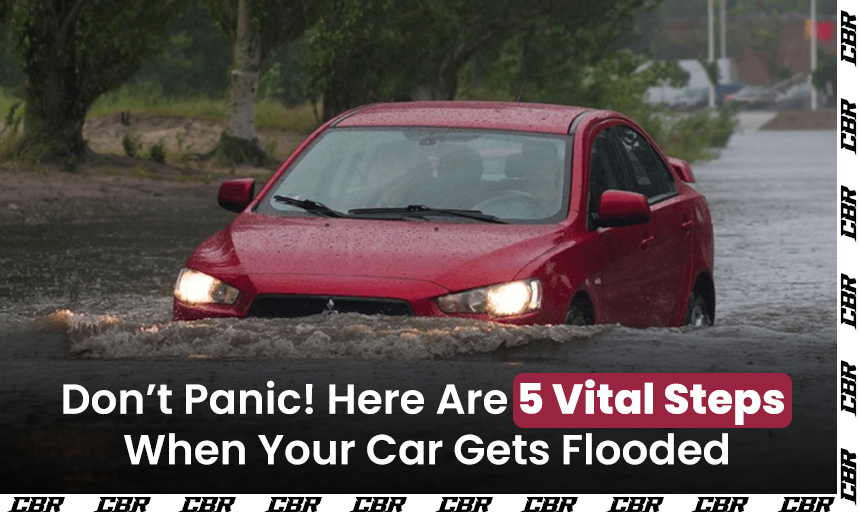The monsoon season has arrived in full swing, and with it, the inevitable challenges. Waterlogged streets have become a daily sight in both major cities and smaller towns. The non-stop downpours often catch us off guard, leaving vehicles stranded in flooded areas for hours. While the situation can be distressing, it’s crucial to know what steps to take if your car gets stuck in water. Here’s a detailed guide to help you manage this situation effectively:

1. Do NOT Turn the Engine On
- Primary Tip: Avoid Engine Start-Up in Floodwaters If your car is submerged in water, the worst thing you can do is turn the engine back on. Doing so can cause a “hydro lock,” where water enters the engine and severely damages the pistons. This could lead to extensive and expensive engine damage, which may result in the car becoming unusable. The first and foremost step is to leave the engine off to avoid this costly mistake.
2. Escape Your Vehicle Immediately
- Prioritize Safety: Get Out ASAP If you’re trapped inside a flooding car, your primary concern should be to escape as quickly and safely as possible. Flooding during heavy rains can escalate rapidly, and remaining inside the vehicle can be dangerous. Getting out ensures that you can stay calm, assess the situation from outside, and make better decisions.
Also Read: How to Spot a Flood-Damaged Car Before Buying It – Car Bike Review
3. Contact Your Insurance Provider
- Secure Your Finances: Call Insurance Right Away After escaping the vehicle, your next step should be to contact your insurance provider. Flood damage is typically covered under comprehensive insurance policies. Informing your insurer early on ensures that the claims process begins promptly, as they’ll likely be overwhelmed with similar cases. Acting quickly can save you from significant financial losses and possibly salvage your car.

4. Arrange for Towing Services
- Get Your Vehicle Towed to Safety Once you’ve spoken to your insurance company, it’s time to arrange for towing. You can contact your car manufacturer’s emergency services, a trusted mechanic, or services like GoMechanic. The goal is to get your vehicle out of the water and to a safe location where it can be dried and inspected for damage. Ideally, tow it directly to a service center for a thorough check-up.
Also Read: The MY25 Triumph Speed 400 is officially launched in India (carbikereview.com)
5. Plan the Repair and Insurance Claim Process
- Evaluate the Damage and Plan Repairs Once your car has been towed and dried, it’s time to assess the damage. Whether you decide to go through insurance or pay out-of-pocket, a detailed inspection will help you understand the next steps. Services like GoMechanic offer professional technicians who can guide you on the best course of action, whether it’s minor repairs or more extensive work. Starting the insurance claim early will also expedite the process.

Stay Calm and Plan Ahead
- Keep a Cool Head and Act Smart No matter how stressful the situation may be, maintaining a calm mindset will help you navigate through it effectively. Following these steps will ensure that your car is handled safely and that the damage is minimized.
Also Read: Kia EV9 Teased Ahead of October 3 Launch in India – Car Bike Review
Conclusion
In conclusion, while getting your car stuck in floodwaters can be overwhelming, following these essential steps—keeping the engine off, escaping the vehicle, contacting your insurance provider, arranging for towing, and planning the repair process—can help you navigate the situation safely and minimize damage. Staying calm and acting swiftly is key to protecting both your vehicle and your finances. By being prepared and taking the right actions, you can tackle even the worst monsoon challenges with confidence. Stay tuned to GoMechanic for more practical automotive advice!







